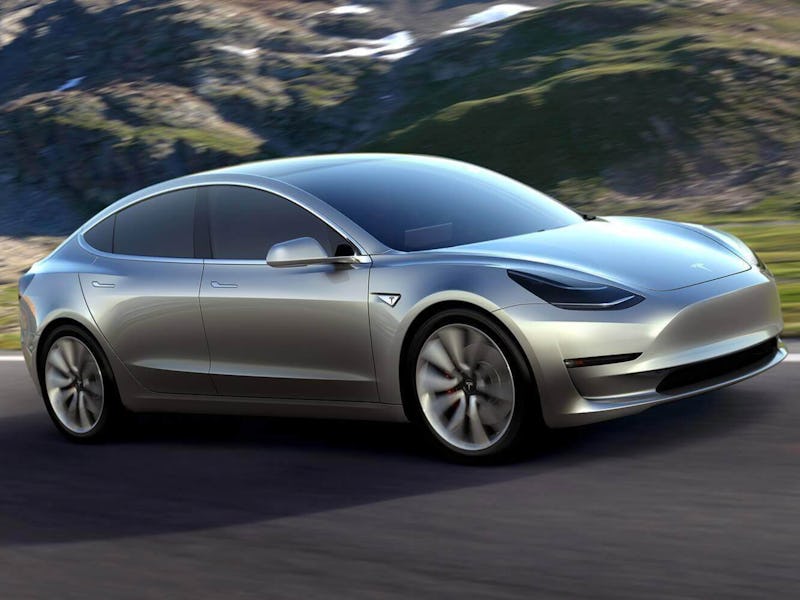Tesla’s Model 3 electric car may face tougher criticism than its current premium-priced offerings, a report released Tuesday suggests. Although the $35,000 vehicle is aimed at bringing cutting-edge electric technology to the mass market, it may lead to a new group of owners that are less forgiving about their car’s flaws than Model S and Model X drivers.
It sounds counterintuitive, but the report suggests Model 3 owners will see themselves differently than other Tesla buyers.
The J.D. Power report, titled “Tesla: Beyond the Hype,” compared Tesla owner focus groups with evaluations of the car’s vehicles by in-house experts. The research found that owners of cars from Tesla’s existing lineup see themselves as pioneers of new technology. This group includes people willing to spend $100,000 on a car, even if the infrastructure to keep it going is still in early stages and most cars on the road are powered by gas. It’s a different mindset to more cash-conscious consumers, and it leads drivers to overlook certain flaws because they understand the risks they took when they bought the vehicle.
“Spending $100,000 or more on a vehicle that has so many problems usually would have a dramatically negative effect on sales and brand perception,” Kathleen Rizk, director, global automotive consulting at J.D. Power, said in a statement. “Right now, though, Tesla seems immune from such disenchanted customers.”
The Tesla Model X has a unique falcon wing door mechanism.
When the Model 3 enters production in July, the company will start making cars for a group of consumers less interested in overlooking flaws. They are likely to prioritize reliability and value for money over the thrill of adopting new technology.
“When consumers buy a mass-market car priced around $35,000 that will be their primary mode of transportation, the degree of expectation will increase immensely,” Rizk said. “We’ve seen that with other well-liked brands, whether or not it involves an electric vehicle.”
Tesla has faced criticism in the past for the reliability of the Model S and Model X. Car and Driver’s 16-month assessment of the Model S P85D found a number of flaws in a short space of time, like squeaky brakes and worn-looking leather. Similarly, Consumer Reports said that “the Model X’s complexity, compromised functionality, and dismal first-year reliability suggest that it’s a car for early adopters eager to one-up their peers.”
But CEO Elon Musk is confident that the lessons learned from Model S and Model X production will help Model 3 production. In a February earnings call, he told investors that the car would be “designed for manufacturing” and is a lot less complex than the other two vehicles. For example, where the Model S has three kilometers of wiring, the Model 3 has just half that.
Whether this reduced complexity translates into reliability remains to be seen. Tesla has set itself ambitious targets for Model 3 production. Where it currently produces 50,000 cars per year, the company wants to reach 500,000 by the year 2018, half of which will be Model 3 cars. The Nevada Gigafactory, which has started producing batteries, will help reach this target, but Tesla will need to be careful to ensure quality doesn’t suffer in the process.
